trash bags
bespoke bags crafted from secondhand and waste materials
I source and forage for secondhand and discarded materials, test what fiber arts technique those materials can support, then transform them into unique purses using what I’ve learned


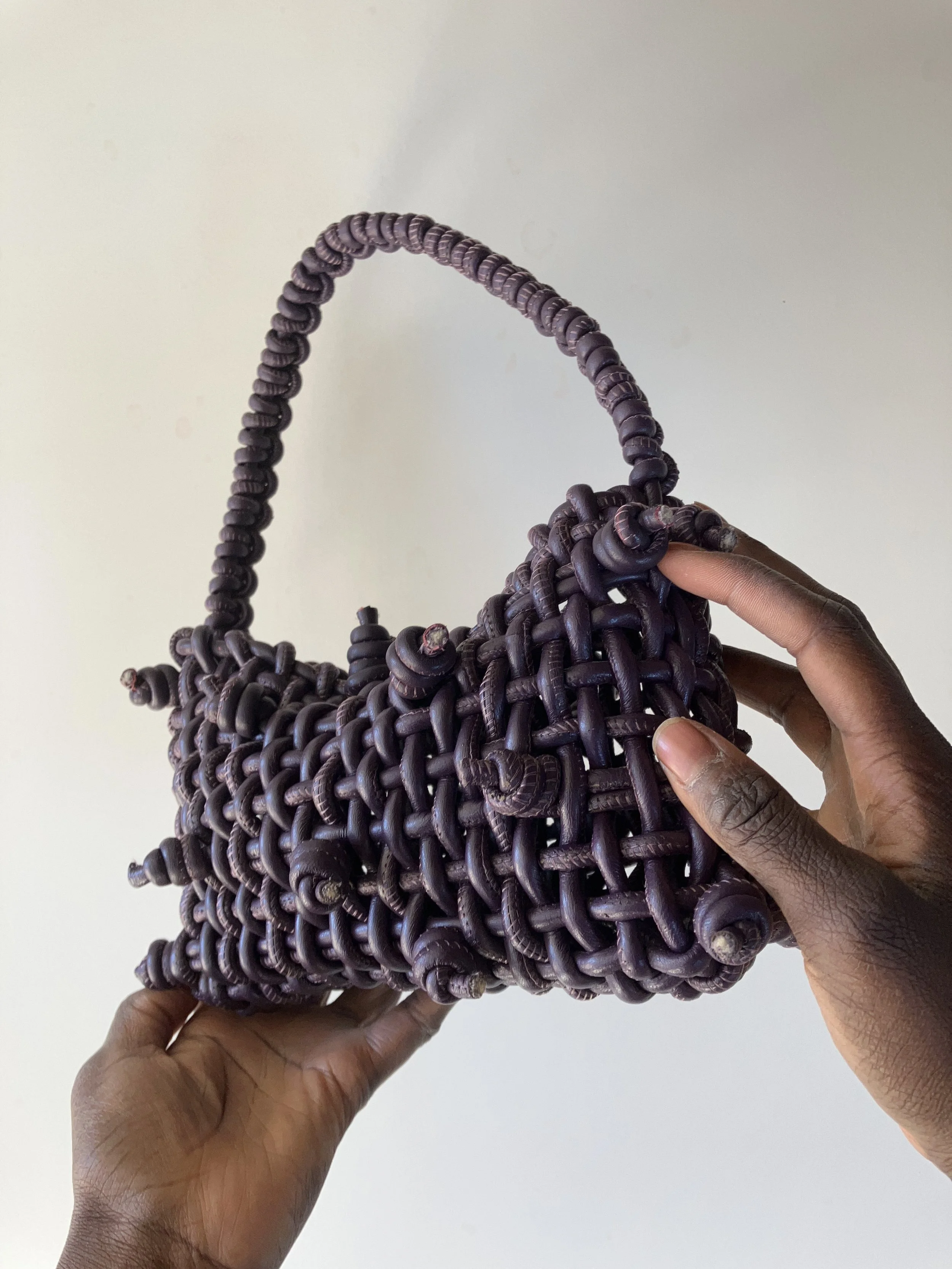

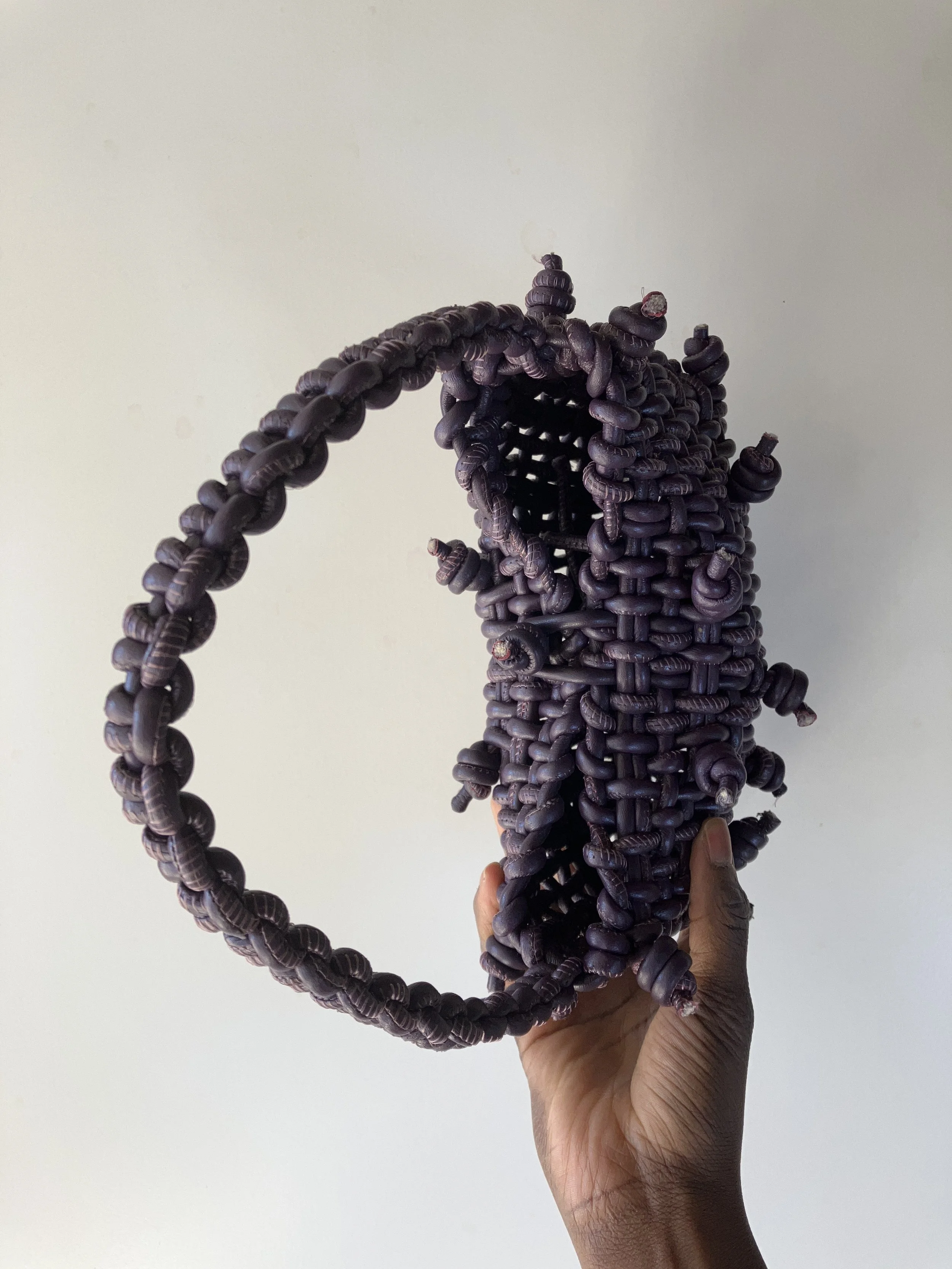


Name:
Unnamed
Ingredients:
discarded/unused, produce bag mesh
discarded/spent, aquarium filter balls
Source:
UC Davis Bodega Marine Laboratory, ARG Department
click the image to learn more (it’s a vid)
trash bag no. 1
Construction:
simple basketweave base finished with alternating overhand knots
mesh filled with color-matched bioballs to showcase its expansion properties
Material Notes:
This plastic was too slippery to hold a single row of knots. No matter how tight the knot was made, it would loosen immediately once tension was released. Instead of introducing mitigating measures like adhesive or stitching, I opted for forming multiple, tight, alternating rows of knots to build up the bag’s walls. With no slack between rows, knots are always under tension and unable to slip undone.
bonus effect: the rigid walled structure maintains its shape
The materials allow an amazing amount of stretch. The filled portions of the bag walls can be made more dramatic in future iterations.
trash bag no. 2
Name:
the Bantu bag
Ingredients:
secondhand/light damage, stitched leather cord
Source:
secondhand materials shop, ArtFORM
Construction:
woven body with barrel knot finish where shorter cords overlap.
vertical lark’s head strap
Material Notes:
the knotted spiky look emerged out of a limitation of materials. normally, i weave my purses from one continuous strand of cord up to 100 ft long. that’s not feasible when purchasing secondhand, and expensive purchased new. i’d have to piece shorter strands together to complete the body.
my usual inclination is to weave the loose ends in well enough that they’re barely noticeable. i can’t hide with leather. the cordage is too stiff to tuck away and too thick to join the way you might do with a cotton yarn or cord.
so we embrace the beautiful leather material properties. i added knots to the overlapping ends of cord, and added additional overlaps to fill emptier spots



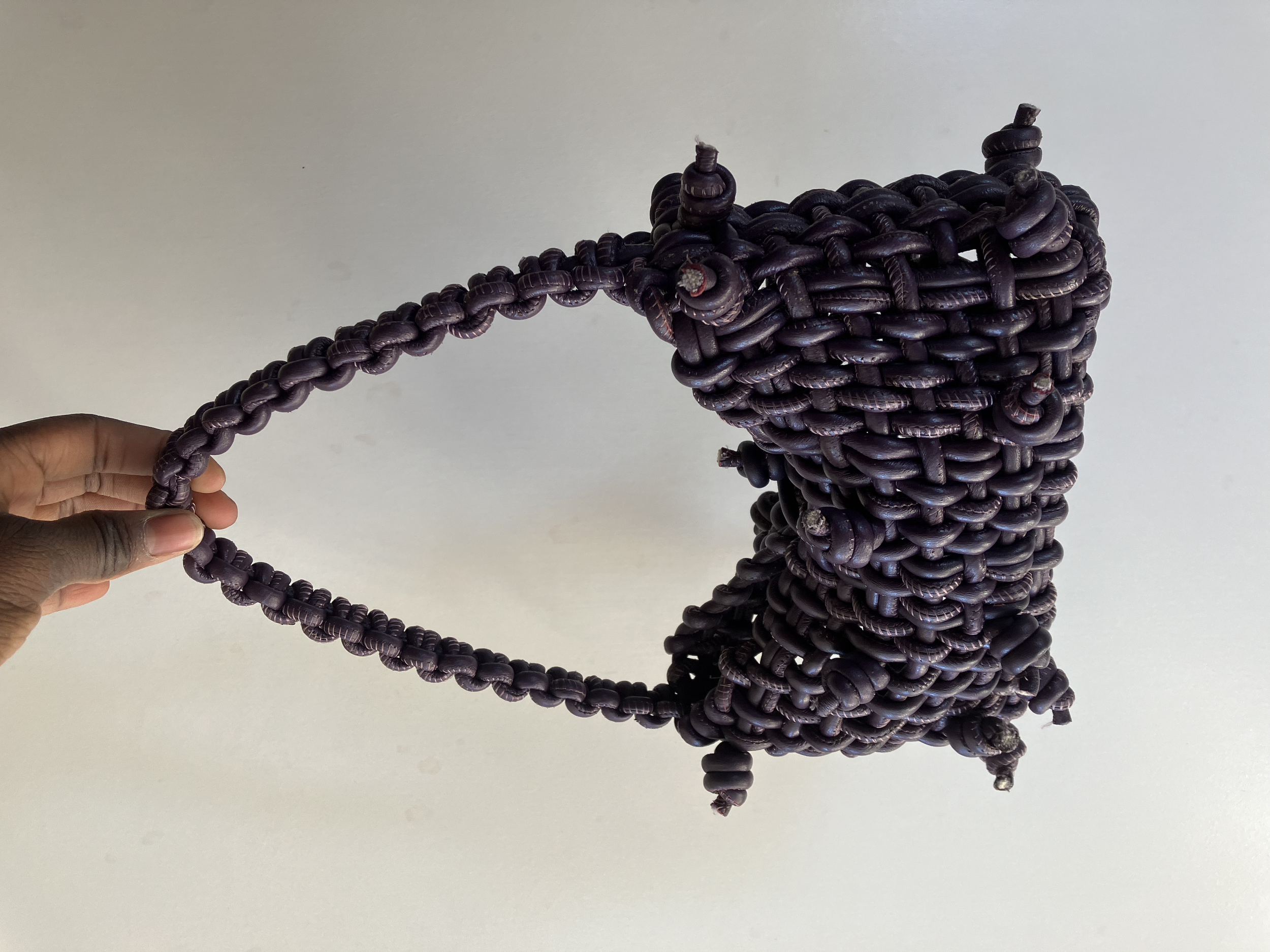
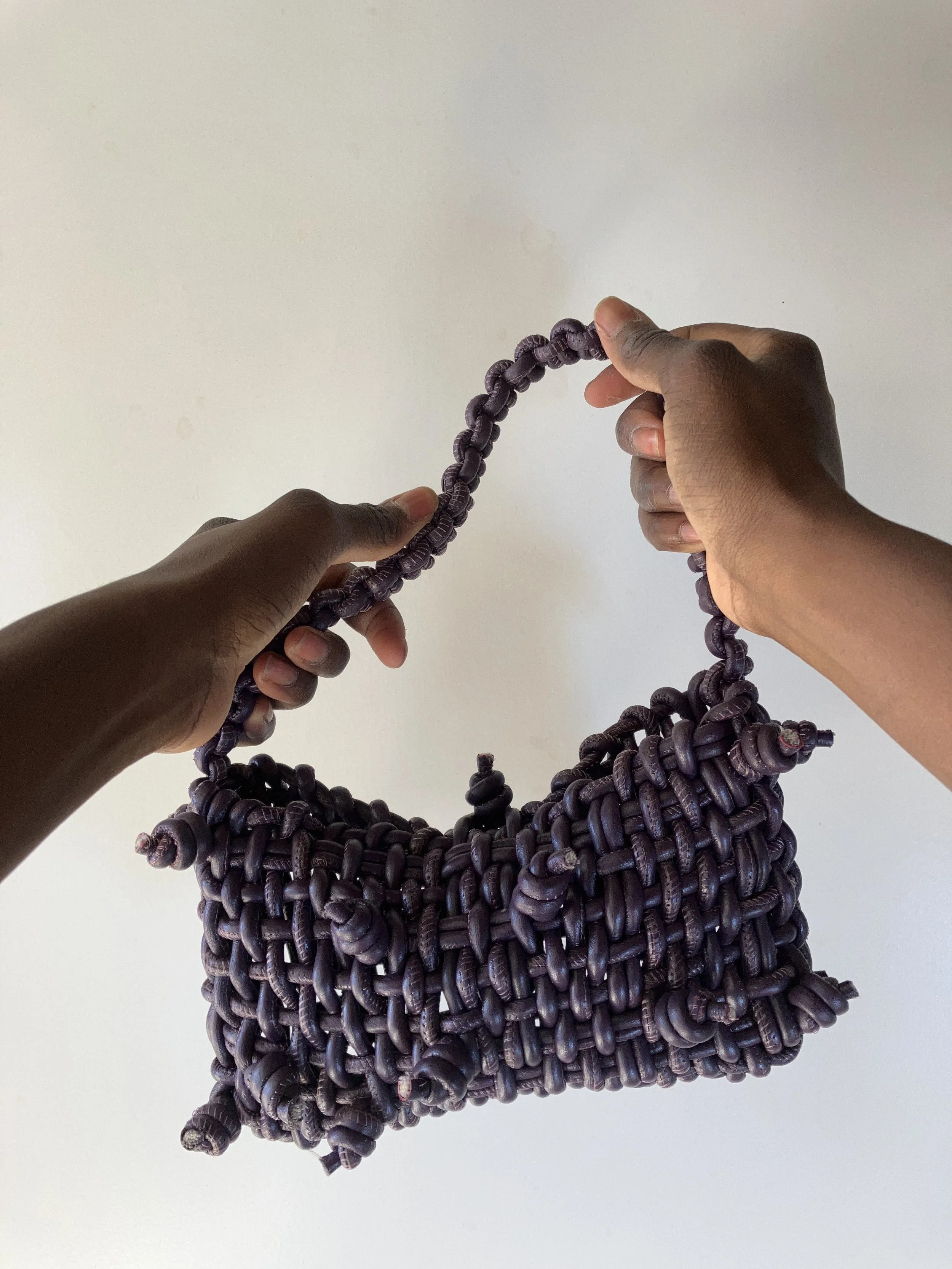
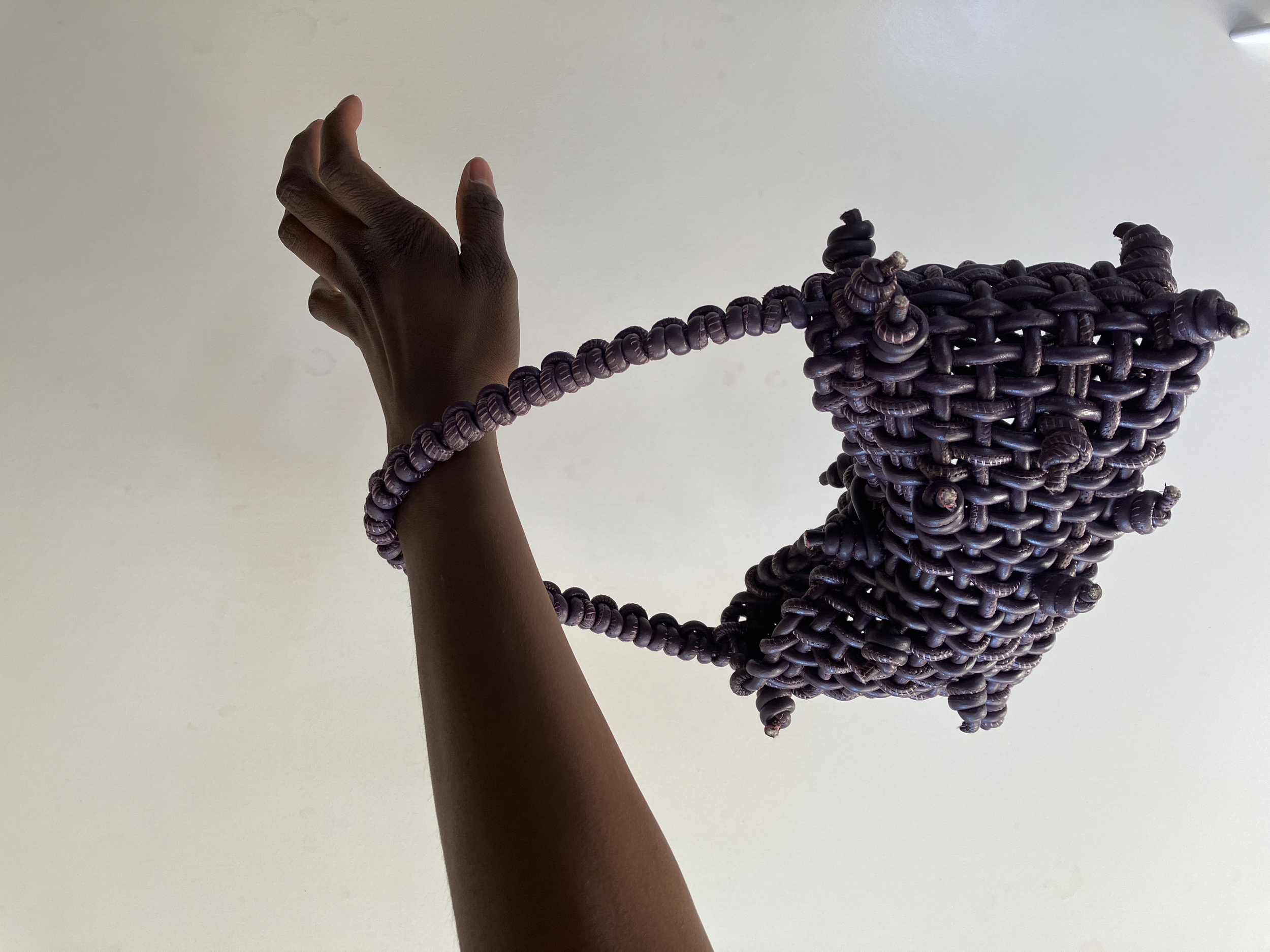
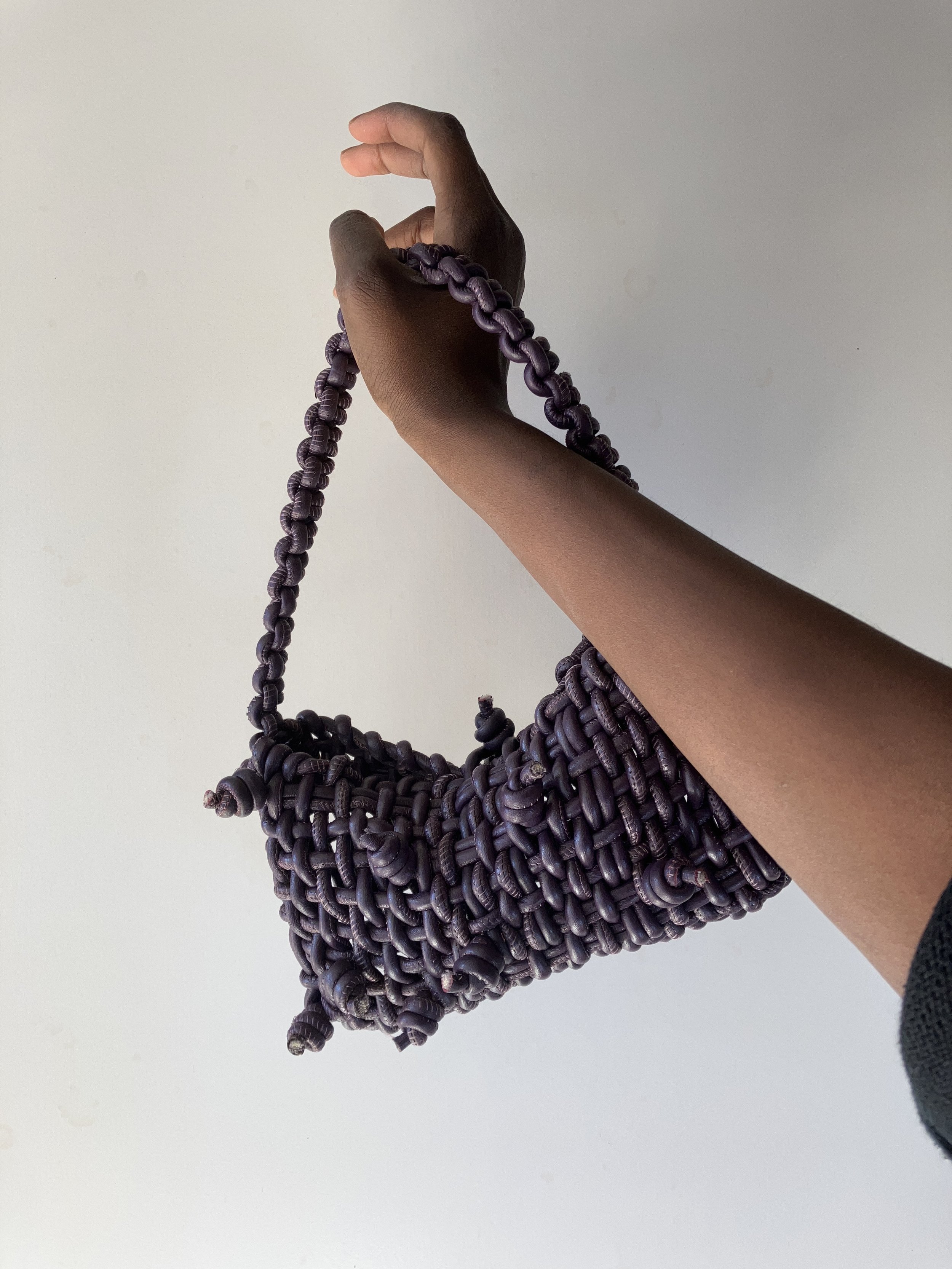
trash bag no. 3
Name:
The Clam Bag (working title)
Ingredients:
discarded/light damage, nylon fishing net
secondhand/unused, polyester bias tape
new, color matched thread
Source:
UC Davis Bodega Marine Laboratory, ARG Department
secondhand materials shop, ArtFORM
Construction:
patterned and cut into an ellipse
hemmed around the full perimeter with bias tape
hems joined and sewn into a canoe shape with the ellipse points and center left open
tied to form a handle/strap
Material Notes:
This net can’t be machine sewn directly. The mesh gets caught below in the bobbin case and will jam the machine. Traditional net joining/mending techniques can be used but are time consuming, especially for any project beyond this size.
Machine sewing is possible if you sandwich the mesh between thick fabric, or between double layers of thin fabric. Encasing the edges of this net in bias tape allowed me to complete all my sewing by machine, and added a finished look.